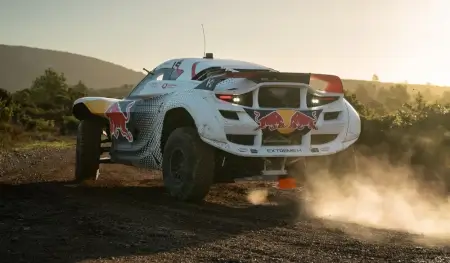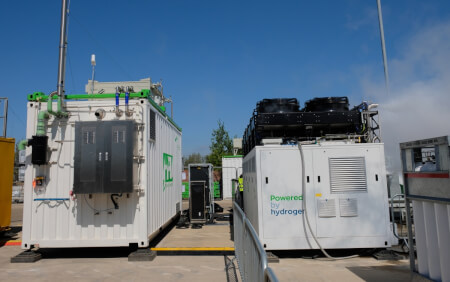January 14th 2025
Extreme H opens up development to encourage manufacturer interest
Extreme H is opening up one avenue for manufacturer development by allowing OEMs to integrate their own hydrogen fuel cells into the upcoming series’ car, the Pioneer 25.
The move represents a slight shift in ethos for Extreme H and its predecessor Extreme E, which have both been strictly single-make series in every aspect (aside from allowing small bodywork changes) in a bid to control costs by preventing a technology arms war and subsequent spiraling costs.
“The logic behind that is you’ve got road-to-race-to-road — you can take one of your existing off-the-shelf fuel cells that’s not a race-specific development item and you can showcase it using Extreme H,” Extreme H technical director Mark Grain told RACER. “And we are working with the FIA on a framework for those regulations.
“The logic behind that is you’ve got road-to-race-to-road — you can take one of your existing off-the-shelf fuel cells that’s not a race-specific development item and you can showcase it using Extreme H,” Extreme H technical director Mark Grain told RACER. “And we are working with the FIA on a framework for those regulations.
“We’re very conscious that this is not a means to introduce runaway costs, it really is taking a standard item that you’ve got in your inventory and allowing you to race it, therefore demonstrating and promoting your technology via Extreme H. That’s the logic behind it.”
Expanding on the cost containment aspect, Grain said the decision to allow components already in production will enable them to still be controlled.
“We are hugely conscious of containing costs and that is why you’ll be using your inventory so you should have these items available, then you’ll do an installation into an existing car that the money’s been spent on, shall we say,” he said. “Inevitably that comes with some redesign and engineering work, of course, but we’re not talking millions and millions of dollars by any means. It’s actually quite achievable at a very cheap price.”
Manufacturers will be able to develop fuel cells for the series as well, and Grain added that the series is working with the FIA to devise regulations that will ensure that not only costs will be controlled, but the racing will remain competitive. Much like fuel flow limits in combustion-based series like Formula 1, the rate of energy produced by the fuel cell can be controlled to maintain a level playing field.
“We’re working with the FIA to define those rulesets, and we’re very keen that the other thing that we don’t want to do here is allow somebody to enter and run away with the championship,” he said. “If you think that hydrogen fuel cells have an output, and you can control that output, their input is invaluable.
“It’s energy use — it’s the energy that is produced by the fuel cell — but what it does, all that action in that harsh environment, your fuel cell will be put through all of that. Therefore it’s a great platform to go, ‘Look at what our fuel cell can do. If you want to buy one of our cars, this is what it’s capable of.’”
Grain also revealed manufacturers have already signalled an interest in the burgeoning competition, saying they’ve had “strong conversations” with a number of leading carmakers.
“They are ones that are all leading hydrogen fuel cell adoption,” he pointed out, and that “Over the Christmas period I had a call with another one, so there’s good strong momentum behind all of that.”
For more information: www.racer.com
For more Industry News, please Click Here
For more information: www.racer.com
For more Industry News, please Click Here














